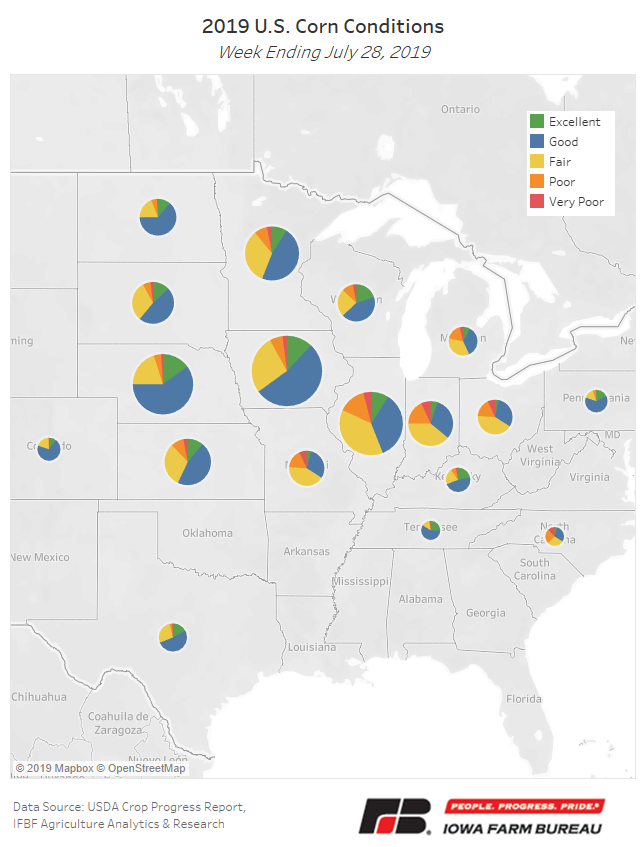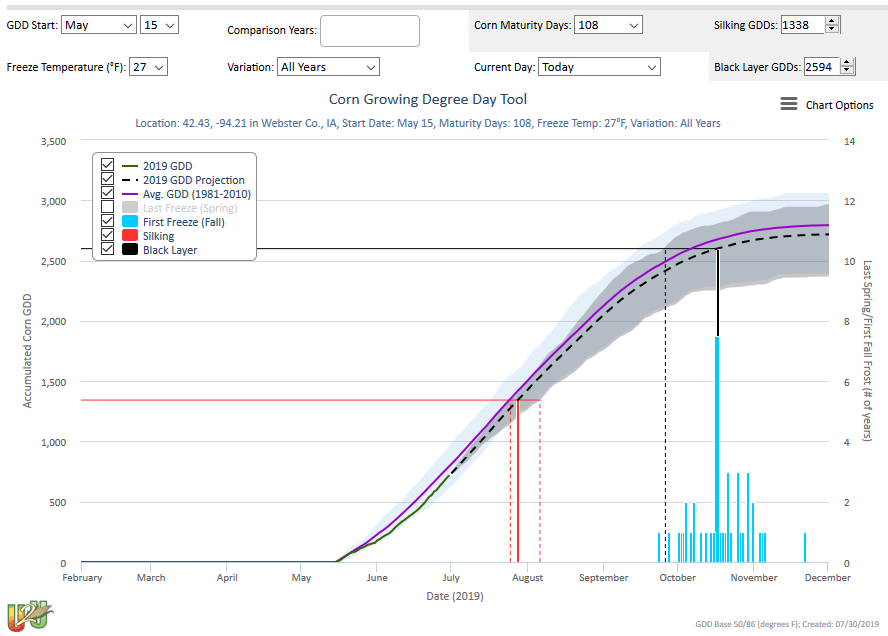July 2019 crop progress risks
Author
Published
7/31/2019
There is a risk looming for those with planted corn acres. We have rarely planted this late across Iowa and the odds are not in our favor to get a large share of corn acres to the finish line with an attractive condition (maturity and moisture) and yield level.
Prices could move upward if the size of the crop increases and you market before the run limiting your upside income-potential. Sell later and you might find the price lowers with competition from other market sources or the crop is larger than many expect.
Current Conditions
Current corn conditions in Iowa show 12% Excellent, 53% Good, 27% Fair, 6% Poor and 2% Very Poor. The percentage of Good/Excellent corn (65%) in Iowa is much better than some other corn producing states such as Illinois, Indiana, and Missouri where Good/Excellent conditions are only 44%, 36% and 34%, respectively. The last time Iowa’s conditions were below 65% Good/Excellent for corn in Week #30 was in 2012 and 2013.
Although USDA reported crop conditions for Iowa are not tremendously out of line historically, they disguise the fact that this crop is being ranked against the stand itself for the condition reported and not against the timeline in which it was planted.

Delayed Progress
According to the July 28, 2019 USDA/NASS Iowa Crop Progress and Condition report, 69% of the Iowa corn crop is silking, a large jump from 41% the previous week but still significantly behind last year (95%) and the 5-year average of 89% silking.
Many farmers are beginning to consider the risk of their crop not hitting maturity level or having adequate dry-down time in the field. An informational tool from the High Plains Regional Climate Center at the University of Nebraska is available that compares critical weather dates and crop quality based on historical evidence with growing degree days. This tool allows you to choose your county, planting date, and corn maturity length and see when fall freeze dates typically occur to determine your potential to reach black layer before that time. In the Webster County example below, if 108 day corn was planted around May 15th this year, the black layer date is predicted to occur around October 17th, which is also the average first fall freeze date. However, there are many years in which a freeze occurred before that time as shown with the blue lines below.

Visit this website to plug in your own information: https://hprcc.unl.edu/gdd.php or view low temperature probabilities for your climate district here.
Risks to Consider
Understanding your financial risk-tolerance and ability to find a successful solution with certain price triggers given your costs of production and cash-flow needs is critical during the period of uncertainty. What is your need to sell or buy corn? What production volume can you realistically expect from your planted crop acres? Do you need to cover contracts for delivery or feed needs?
Here are additional resources on understanding and managing finances and stress in your operation:
Want more news on this topic? Farm Bureau members may subscribe for a free email news service, featuring the farm and rural topics that interest them most!